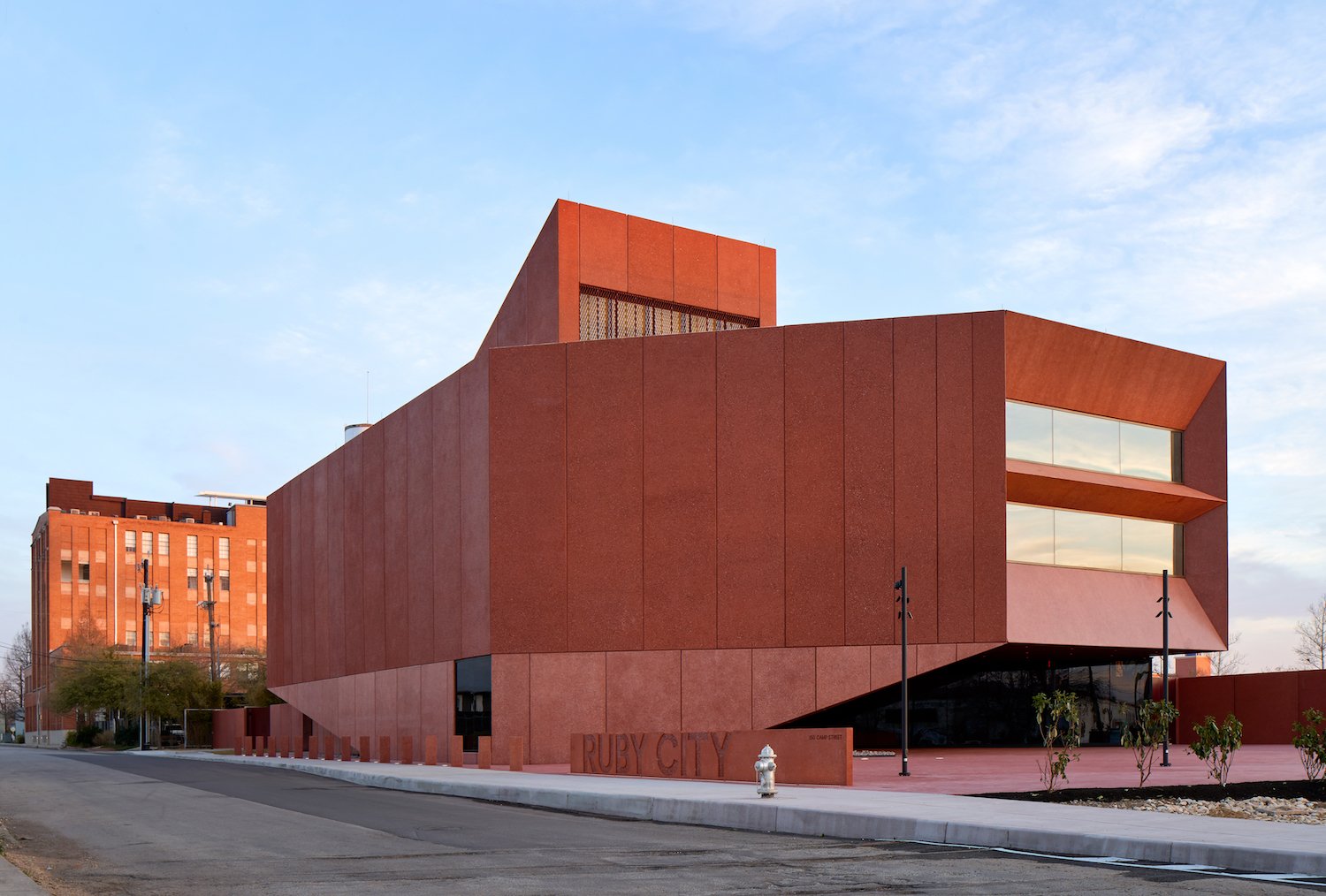
It all started with a sketch from a dream.
Linda Pace, the heiress to the Pace foods company and a longtime supporter of the arts, had gotten into the habit of drawing images from her dreams when one night, in the mid-2000s, she awoke from one and remembered a vision of a crimson red building, bejeweled and turreted, where people could look at art. She called it Ruby City.
The resulting sketch, admittedly, was not as sublime as the dream’s description. (It looks like a princess’s crown rendered with child-like glee.) But it was enough for David Adjaye, the British architect Pace tapped in 2006 to design an art center in her hometown of San Antonio, Texas, to work with.
Pace, who died in 2007 following a cancer diagnosis, never lived to see her masterpiece take shape. But 13 years later, Ruby City is now officially open to the public.
Linda Pace. Courtesy of Ruby City. Photo: Todd Johnson.
Adjaye’s building, a modernized, dusty red update on Pace’s dream palace, rises from the street in angles, like a cactus flower. It was erected from red, precast concrete embedded with glass and mica, giving it a faint glimmer from certain angles. Inside, the building houses 900-plus artworks that made up Pace’s personal collection, now run by the Linda Pace Foundation.
“It’s a very personal collection,” says Kathryn Kanjo, a foundation trustee and the curator of Ruby City’s inaugural exhibition, “Waking Dream.”
“Linda fearlessly collected from her own point of view. She resisted pressures of the market and was not afraid to go against the grain in terms of what was seen in other public collections, commercials galleries, or private holdings. She wasn’t trophy-hunting.”
Linda Pace’s dream sketch of Ruby City. Courtesy of Ruby City.
“The collection to me feels very experiential,” says Ruby City’s head of collections, Kelly O’Connor, noting that Pace, who became an artist late in life, acquired most of her works directly from artists. (Many of them came through the residency program and gallery she founded, artpace). “You really see Linda’s intuitive collecting style. She wasn’t going after one work that was going to represent that artist’s whole output.”
She preferred to collect work by female artists such as Laura Aguilar, Andrea Bowers, Sarah Charlesworth, Lorraine O’Grady, Nancy Rubins, and Diana Thater, among many others who feature prominently in the collection. San Antonio artists such as Chuck Ramirez, Cruz Ortiz, and Ana Fernandez also enjoy a large presence in the foundation’s holdings, as do London-based artists like Isaac Julien, Gillian Wearing, and Rachel Whiteread. (Pace lived in the British city for five years in the 1990s.)
A view of Ruby City’s inaugural exhibition, “Waking Dream.” Courtesy of Ruby City.
Ruby City, which is free and open to the public and has no explicit educational agenda, is not a museum per se—at least not in its stated intentions.
“Linda didn’t want to replicate art history,” Kanjo says. “She wanted people to come to the artwork in an unmediated way. I think she felt that museums are burdened with having to tell some sort of sanctified art history, that they can be bogged down, too administrative or bureaucratic.”
Indeed, it doesn’t feel like a museum, even though it has all the trappings of one. You’d never mistake it for a state-sponsored institution or a staid, white-cube enterprise beholden—financially and ideologically—to the art world’s status quo. Pace’s personality is foregrounded at every turn, down to the center’s fanciful name. Her picture greets visitors in the entryway and her work is installed among the biggest names of the collection. Clusters of gemstones are embedded in the walkways of the park outside of the museum—a literal manifestation of one of Pace’s favorite phrases, “jewels in the concrete.”
A view of Ruby City’s inaugural exhibition, “Waking Dream.” Courtesy of Ruby City.
Yet what might seem like an exercise in ego is, more often than not, actually a trick to strip away the pretension of contemporary art, putting in its place a healthy dose of home-spun Texas charm. It’s a maneuver Pace herself seems to have mastered.
“Fifteen years ago, we would be nervous to call this thing Ruby City, fearing that it might sound a little too ‘new age,’” Kanjo says. “But more and more, audiences want to find authentic expressions. This place is authentically Linda.”